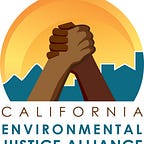Climate Solutions Must Begin With Impacted Communities
In the shadows of the Chevron Refinery in Richmond, thousands of Laotian and Mien refugees live, work, and go to school. They fled war and upheaval in their home country, and as they struggled to build a life in Richmond, they confronted a different kind of hardship: the hazards of living near an oil refinery. The refinery has not only exploded multiple times, but the combined daily exposures of living in a highly industrialized neighborhood have lead to very real health impacts. Children living in Richmond are hospitalized for asthma at almost twice the rate of children in the rest of the state and more than double the national average.
Mey Saechao, a leader of the Asian Pacific Environmental Network, lives in neighboring San Pablo with her five children. Living in close proximity to the refinery for years, she often gets migraines and her vision has been impaired by the fire and smoke. Everyday, the Chevron Refinery spews poison into the air that keeps her from going outside to work in her garden. An explosion at the refinery in 2012, sent Mey to the hospital after being exposed to toxics. But she, like thousands of others, was not able to get the treatment she needed. Today, residents like Mey live in constant fear of another dangerous explosion and want to see Chevron reduce their pollution.
Not only do Mey and other residents in Richmond suffer from health impacts related to poor air quality, these same communities are hit first and worst by climate change. Whether it’s increased storms, flooding, or heat waves, low-income communities will be bear the burden. Climate change is not just a global pollution issue: it is an issue of health and quality of life in communities like Richmond.
Polluters are responsible for the disproportionate burden on frontline communities
Across the state, our biggest polluters are more likely to be located in low-income communities and communities of color like Richmond. 79% of people within one mile of the Chevron Refinery are people of color, and over 25% are below the national poverty line. Overall, communities within 2.5 miles of a GHG-emitting facility have 22% higher proportion of people of color, and 21% higher proportion of low-income people. In communities that live within 2.5 miles of at least 6 GHG-emitting facilities, 90% are people of color.
Loopholes in California climate policy make it easy for polluters to continually pollute without cutting their emissions. Through the cap and trade program, the biggest climate polluters are able to buy or sell permits to pollute at rock-bottom prices. These corporations also get to use a mechanism called “offsets,” which buys an even lower price projects across the country that theoretically compensate for emissions. Yet, the effectiveness is hard to quantify, and the offsets only export climate benefits out of California. 75% of offset projects are located outside of California. Instead of just reducing what comes out of the smokestack, companies in the cap and trade program can use these cost-cutting ways to comply with the state law, without paying the price for their pollution. It’s no surprise that Chevron is the #1 biggest user of offsets.
Time for Big Oil to reduce pollution and pay the price of climate change
California once again showed our climate leadership when we passed aggressive 2030 greenhouse gas reduction targets last year. With the current heated debate in the legislature about how to best achieve those targets, we have a unique opportunity to address long-standing environmental justice issues like those that Mey faces, as well as fight climate change. The reality is that we simply have not seen the local emissions reductions, air quality and public health improvements that environmental justice communities need and deserve. California can move in a new direction that will lead to cleaner air for our most vulnerable communities and build economic prosperity for all Californians.
We want to see direct emission reductions at our largest climate polluters that will fight climate change, address health impacts, reduce asthma rates, prevent cancer and other related illnesses. We must close corporate loopholes like offsets and reign in the endless permits to pollute. The environmental justice movement has long argued that a statewide cap on emissions with a direct fee on carbon — instead of the complicated cap and trade system — would reduce emissions and build economic prosperity for the entire state. It is a simple, direct way to price carbon and would potentially create more revenue for the state. In fact, members of the California Environmental Justice Advisory Committee recently passed a resolution in support of a carbon fee. The resolution agrees that a carbon fee, used in combination with direct emission reductions, is a solution to benefit environmental justice communities through clean energy development, a just workforce transition, and investments in capacity and infrastructure for low-income communities to adapt to climate change.
Mey and the members of APEN living near the Chevron Refinery, like many other communities on the fenceline of our biggest polluters experience an urgent need to address the climate and air quality crisis in our communities. If California wants to maintain our climate leadership, we need to stop trading away our opportunity to reduce greenhouse gases and clean the air. Big polluters cannot continue to keep polluting while our communities suffer. We need strong commitments from our legislators to pass climate policy that benefits and protects our most vulnerable communities.
Read more about CEJA’s environmental justice outcomes we want to see from any carbon pricing legislation this year.
